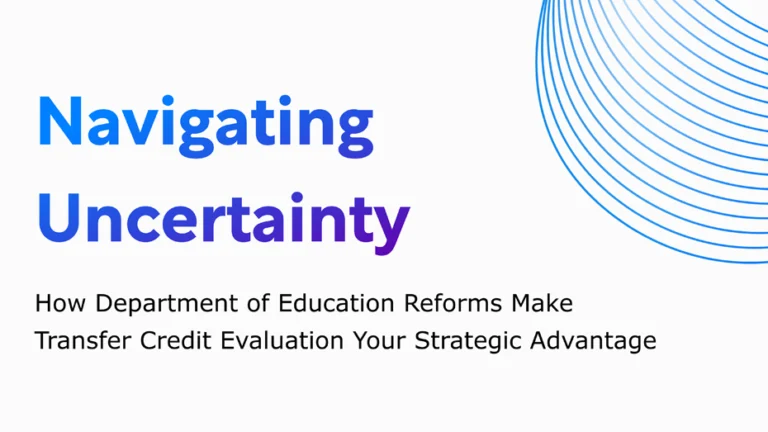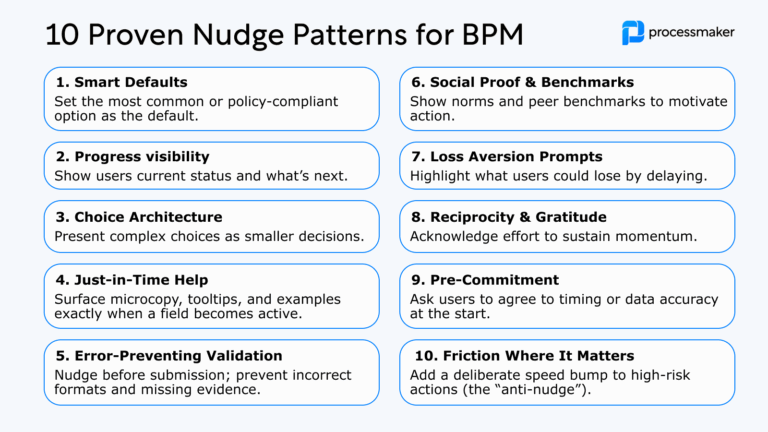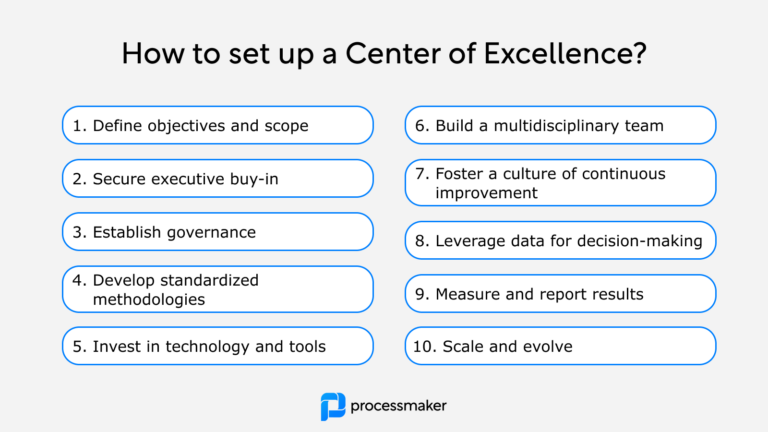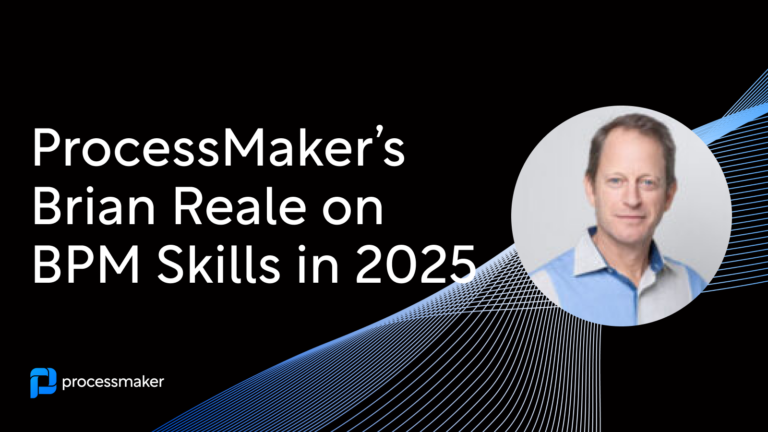If your organization is among those eyeing better returns through business process management (BPM), you’re not alone. With roughly a quarter of organizations globally implementing process mining tools — and 29% looking into using this tech — organizations may be seeking a better return-on-investment (ROI).
You might have found that your BPM returns are hard to measure. Often, teams may fixate on optimization before knowing all the ins and outs of their processes. What’s troubling is that management may find this to prove a lack of returns, leading them to turn away from process management towards alternate efforts.
If your organization doesn’t know the real-world state of its processes, you could be overlooking the immediate benefits of learning exactly what’s done in your processes — and what’s not being done. After all, you can’t “optimize” what you’re not aware of.
Let’s unpack how process mining and process discovery adds transparency to your BPM to deliver next-level value.
1. Learn your “as-is” processes without the bias
Successful business process management starts with getting reacquainted with your organization’s workflows. Process mining lets you tap into your digital business systems to automatically reveal an unbiased log of when and what happens in your processes.
You may have assumptions about how a given process works — only to discover grey areas where employees engage differently. To combat this, you need an honest, fact-based lens to view exactly what happens and doesn’t happen.
Fortunately, process mining extracts from your existing systems that already have the necessary data to construct a real-world history of your workflows. Many companies complement this data with staff interviews and other info gathering methods to build an accurate, true-to-reality picture of your processes “as-is.”
ROI opportunity: Without the blind spots of bias, your team can see the frequency of non-ideal outcomes — and use them as factual breadcrumbs to endorse fixing deeper issues in your organization’s workflows.
For instance, your bank’s onboarding process may spend tons of time fielding basic questions. However, process mining can reveal exactly how often your team sends those redundant support emails.
You could present this data to upper management to push for the creation of a high-ROI online support knowledge portal. Prove to management that this time lost could be costs saved — via lower staffing needs or even more time and attention towards high-value client cases.
2. Reveal undiscovered workarounds and irregularities in your processes
Where process mining uncovered what happens in your real-world digital processes, process discovery gives context for how it happens.
Your mined list of system interaction events may not be enough to decide if processes are running as intended. Often, you’ll need to understand how someone navigates a given system to arrive at the outcome.
For example, if accounts payable enters invoice details into a system, mining will track each time it happens and tell you when it occurred. Process discovery can go further to log each mouse click and keystroke in your business systems that lead to the entry of each invoice.
ROI opportunity: Automatically learn exactly how the staff is deviating from your ideal processes to discover and address rare, high-cost issues that could fly under your radar.
Rather than thinking “process mining vs process discovery,” consider using both in tandem. Tracing the thread between system events inevitably leads to a better understanding of how your staff completes their workflow cycles. You can track when an outcome doesn’t occur often enough, but also when intermediary steps might vary or be omitted.
3. Easily clean up and monitor your processes for compliance
When you organize your operations, you give them the structure that regulatory bodies expect. Compliance is the result of clean, documented workflows.
Non-compliant teams often chase audit preparedness in crunchtime rather than baking it into their work. Frantic, exhausted, and stretched for time is not a cost-conscious state for your staff. Yet, predictable compliance checks may not fall on your company’s radar until it becomes impossible to ignore.
Business process management turns the afterthought of compliance into the groundwork for your day-to-day business. Many teams comply easier when they shine a light on their processes’ hidden gears and oil the unpredictability out of the work. Keeping your processes well-traced and predictable gets easier when you have a system to make it happen.
ROI opportunity: Eliminate fear of non-compliance fines and poor reputation from your business.
The fabric of a compliant business depends on knowing how every part of each process comes together. Penalties and negative company image can unravel your team’s hard work, but they can be avoided. Log all your activities without any extra labor, and you’re far closer to seamless reporting — even in intensely regulated industries.
4. Downsize the cost of hidden risks for better resilience
Quality depends on predictability just as compliance does. Risk management accounts for fluctuating quality to establish a reliable rhythm in the workplace. When the inevitable disruption hits, you’ll want to be sure that you’re prepared to make it as low-impact as possible.
Forecasting your risk requires a full awareness of what you can control. This degree of visibility is hard to keep when teams are globally distributed. Naturally, it’s the spotty, irregular issues that don’t get caught until they’re too costly to ignore.
Effective business process management equips you to shift perspective on the fly to find precise points of fluctuation. For those infrequent quality issues you may easily overlook, process mining and discovery give your BPM to get your workflows consistent.
ROI opportunity: Pad your budget against emergencies with cost savings via steadier workflows. BPM simplifies your mission to spot and mend any value drains for long-term resilience.
Waiting to measure quality costs after an incident puts you in a vulnerable place. Instead, consider whether you’re looking at what unstable workflows are costing you if you don’t improve. Costs saved go a long way towards helping you stay solid during the biggest disruptors.
5. Get agile by standardizing for better automation
BPM often gets used as a vehicle for better automation by sculpting manual processes into bot-friendly models. Standardized processes are pivotal in keeping your automation aligned with your desired outcomes by keeping workflows predictable and scalable.
However, predictable processes once again aren’t easy to achieve when you can’t see the variants. Overlooking any unknowns leaves chunks of your workflows in the shadows, including those that should be plugged into your automation. Worse, you might be including site-specific patchwork solutions that hold your progress back.
Enabling better business process management through mining and process discovery leaves every step, task, and method exposed. You can find the most reliable routes to your solutions and make these the go-to across sites.
ROI potential: Set process standards to automate and scale your operations with more agility. Standardized processes give you the foundation to expand or scale down automation as needed.
Your vision for automating can be very different from other teams and departments within your organization. In today’s economic climate, management may aim for a few pilot efforts before growing. Others may target a complete multi-phase digital transformation. The context of mining and process discovery supports making your business uniform to enable this flexible prioritization.
Tapping into the ROI potential of Business Process Management
In summary, time and money saved with enhanced visibility take your business process management ROI further. Process mining and discovery unearth the full picture of your processes to help you decide:
- What should be optimized?
- How to improve?
- What returns to expect?
Ultimately, visibility reveals all your processes and their real-world execution — gathering all the known, unknown, and variant parts for better optimization and automation. With an intelligent Business Process Management Software (iBPMS) like ProcessMaker, you’ll have a ready-made platform to help you explore mining and discovery tools.





